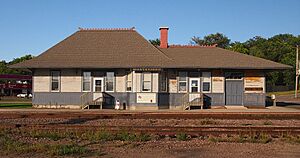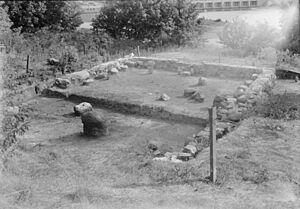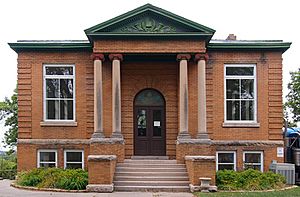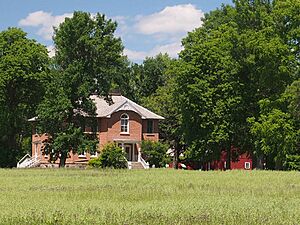National Register of Historic Places listings in Chippewa County, Minnesota facts for kids
Chippewa County in Minnesota is home to many special places that are important to history. These places are listed on the National Register of Historic Places. This list helps protect buildings, sites, and objects that tell us about the past. It's like a special club for historic spots across the United States!
There are 9 places in Chippewa County that are on this important list. Each one has a unique story about how people lived, worked, and built communities in the past.
What is the National Register of Historic Places?
The National Register of Historic Places is the official list of the nation's historic places worth saving. It's managed by the National Park Service. When a place is added to this list, it means it's recognized for its historical, architectural, archaeological, engineering, or cultural importance. This helps people learn about and protect these special sites for future generations.
Historic Places in Chippewa County
Charles H. Budd House
This house was built in 1909 and belonged to Charles H. Budd. He was a very important person in Montevideo, arriving there in 1872. Mr. Budd was involved in many things, like law, local government, banking, and community activities. His house is a reminder of the people who helped build the early towns in Minnesota.
Chicago, Milwaukee and St. Paul Depot
This building, finished in 1901, was once a busy train station in Montevideo. It was part of the Milwaukee Road railway system. This station was a big reason why Montevideo grew into the town it is today. Trains brought people and goods, helping the town develop. Now, this historic depot is a railway museum where you can learn about trains and the town's past.
Chippewa County Bank
Built in 1900, this impressive building housed Montevideo's oldest bank. The bank itself started way back in 1870. The building's style is called Romanesque Revival, which means it looks like old Roman buildings with strong, rounded arches. It shows how important banks were to the growth of towns.
Henry Gippe Farmstead
This farm was established in 1865, making it one of the very first permanent farms in Chippewa County. The beautiful main house, built in 1887, is one of the oldest brick farmhouses still standing in the area. It gives us a glimpse into early farming life and the hard work of the first settlers.
Lac qui Parle Mission Archeological Historic District
This area is a very important historical site. It includes the location of Fort Renville, a trading post from 1826. It also has the site of a Christian mission church built in 1841, which was rebuilt in the 1940s. This district tells the story of early European-American settlers and the Dakota people who lived there. It's a place where different cultures met and interacted.
Montevideo Carnegie Library
This library was built in 1906 with money from Andrew Carnegie, a famous businessman who funded many libraries across the country. It served the community as a library until 1968. The building has a simple, classic style called Neoclassical architecture. It represents the importance of education and public access to books in the early 20th century.
Olof Swensson Farmstead
This farm was the homestead of Olof Swensson, a Norwegian immigrant who settled here in 1873. He was known for building much of his farm himself and for his unique ideas about improving society. Today, this farm is the Swensson Farm Museum. It helps us understand the lives of immigrants and how they built their new homes in America.
Julian A. Weaver House
This house, built around 1878, belonged to Julian A. Weaver. He was the very first railway agent in Granite Falls. This house is special because it's one of the few homes from the 1870s in the region that is still in its original condition. It shows us what homes looked like for important community members during that time.










